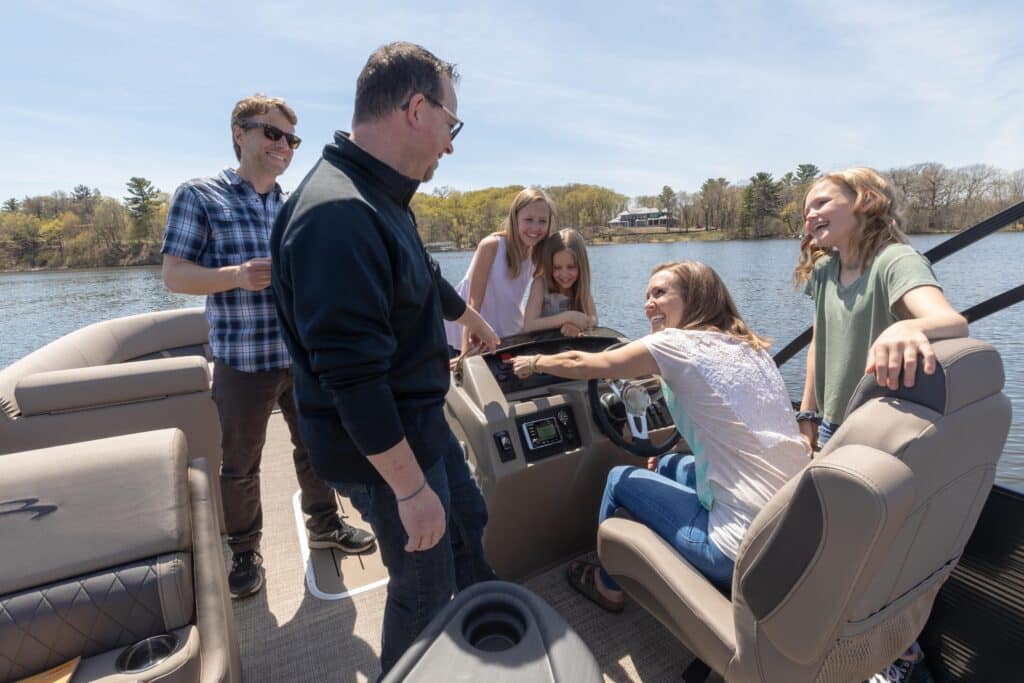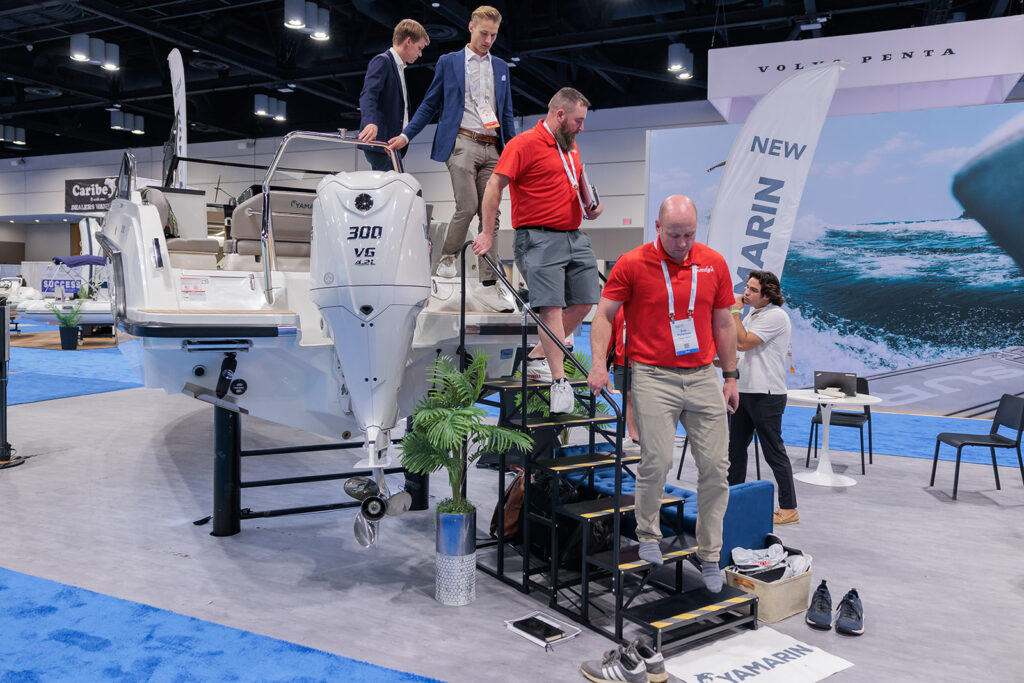When your schedule fills up with boat deliveries and potential buyers, it’s tempting to find shortcuts in the sales process.
Skipping a boat demo might seem like a time-saver. But it can lead to frustrated customers, safety risks, or even accidents due to improper operation.
A simple demo helps ensure buyers feel confident and prepared before hitting the water.

Customers coming in to buy a boat come from a wide range of boating experience, which is why boat demos (and product demonstrations in general) are important for safe and enjoyable boating.
Some have been passengers for years and are finally purchasing their own boat. Others are upgrading from an older model, like a ‘90s pontoon, to a modern wake boat. And some are first-time buyers who have never operated a boat.
Regardless of their experience, the boat they’re buying is likely new to them. With advancements in boat technology, even experienced boaters may need guidance. A boat demo bridges that knowledge gap, making for a safer and more enjoyable experience.
Key Considerations for Effective Boat Demos:
- Assess the Customer’s Experience:
- Before delivery, note the customer’s boating experience in your customer relationship management (CRM) system. But don’t assume – ask again. Some may overstate their skills due to pride. Encourage honesty so you can provide the right level of guidance.
- Conduct an On-Land Boat Demo (If Needed)
- If an in-water demo isn’t possible, an on-land demo is the next best thing. Walk the customer through:
- Controls & safety features: Explain them as if you were on the water.
- Trailer basics: If applicable, demonstrate how to hitch, load, and unload the boat.
- If an in-water demo isn’t possible, an on-land demo is the next best thing. Walk the customer through:
- Conduct an In-Water Boat Demo
- An in-water demo is ideal. Spend at least an hour showing key features, then let the customer take the helm. As they drive, provide gentle feedback. Aim for a 2:1 ratio of praise to critique – positive reinforcement makes learning easier.
- Teach Trailer Usage (If Applicable)
- If the boat is being trailered, take them through the full process:
- Backing the boat into the water
- Launching & loading the boat onto the trailer
- Securing it properly
- Customers who practice this firsthand will feel much more confident when they go out on their own.
- If the boat is being trailered, take them through the full process:
- Cover Essential Boating Safety Tips
- New boat owners might no be familiar with local regulations. Take time to explain:
- Life jacket laws in their area (as well as the importance of wearing a life jacket)
- No-wake zones, locks, and sandbars
- General waterway etiquette
- New boat owners might no be familiar with local regulations. Take time to explain:
- Personalize the Boat Demo:
- Tailor the demo to the customer’s lifestyle:
- For anglers → Demonstrate the live well and fish finder.
- For wakeboarders → Show how to adjust ballast and wake settings.
- For music lovers → Teach them about the boat’s speaker system and proper noise levels.
- This makes the experience more engaging and builds excitement for their new boat.
- Tailor the demo to the customer’s lifestyle:
- Don’t Leave Them Stranded!
- A boat demo can be information overload. Offer customers a way to reach you if they have follow-up questions. A direct phone number or dealership contact ensures they won’t feel stranded later.
Bonus Tip: Leverage Boat Shows for More Demos
Don’t forget! Boat shows are a great way to schedule boat demos with potential customers who are on the fence about buying. If you’re a dealer, you might have experienced an on-water or an on-land boat demo from a manufacturer at an industry event such as Dealer Week!

Final Thoughts
Boat demos may take extra time, but they create safer, more satisfied customers who feel confident on the water. No one wants to be the person struggling to operate their boat in front of family and friends. By taking the time to educate buyers, you help them become the hero of their boating adventures – earning their trust and long-term loyalty.
Want more insights on running a successful dealership or retail store? Subscribe to our weekly newsletter, Toolbox, and get exclusive tips on operating your dealership as well as relevant marine industry news – delivered straight to your inbox. Click here to subscribe to Toolbox.




